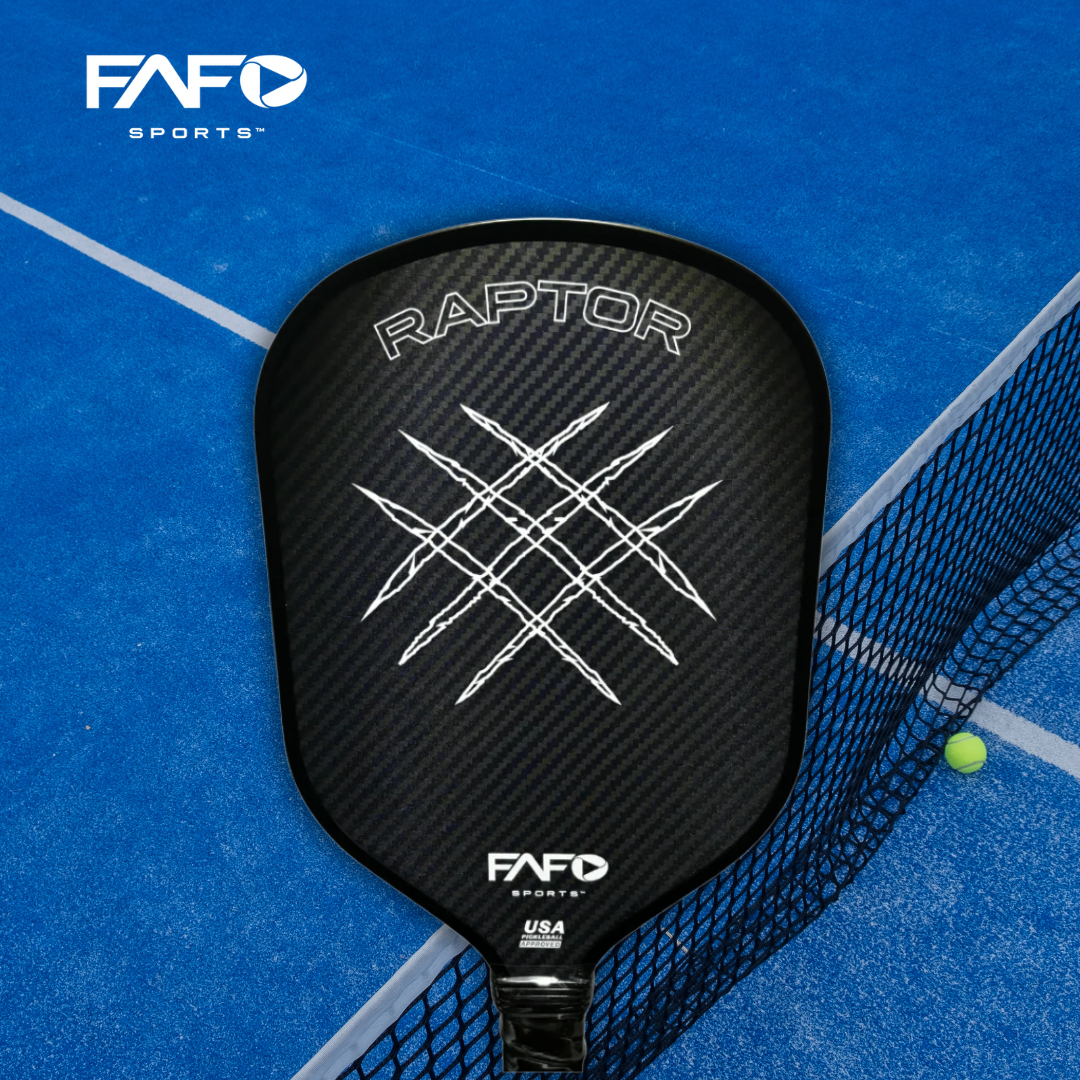
How to Maintain and Extend the Lifespan of Your Pickleball Paddle
Share
A pickleball paddle is an essential piece of equipment for any player, whether you're just starting or are a seasoned pro. With proper pickleball paddle maintenance, you can significantly extend its lifespan and ensure that your paddle continues to perform at its best. In this article, we will explore the best practices for maintaining your paddle, keeping it in top condition for longer, and maximizing its durability.
Understanding the Construction of Your Pickleball Paddle
Before diving into pickleball paddle maintenance, it's important to understand the basic components of your paddle. Most paddles are made from three primary materials: composite, wood, and graphite. The core of the paddle is typically made from polymer, nomex, or aluminum, while the face of the paddle may feature carbon fiber, fiberglass, or composite materials. Each material plays a role in the durability and performance of the paddle, and understanding these differences can help you care for your paddle in the most effective way.
Why Paddle Maintenance is Crucial
Maintaining your pickleball paddle is essential for various reasons, the most important being ensuring optimal performance. A well-maintained paddle provides better control, power, and accuracy. Additionally, taking care of your paddle helps prevent unnecessary damage, such as cracking or wear on the grip, that can lead to costly replacements. Proper maintenance can also help preserve the aesthetics of your paddle, keeping it looking brand new for longer.
1. Store Your Paddle Properly
One of the most crucial aspects of pickleball paddle maintenance is proper storage. Store your paddle in a cool, dry place, away from extreme temperatures and direct sunlight. Extreme heat can cause the materials in the paddle to warp, crack, or become brittle, while cold temperatures can reduce the paddle's responsiveness. For instance, leaving your paddle in the car during a hot summer day can cause irreparable damage.
Ideally, you should store your paddle in a protective cover or case to prevent accidental impacts or scratches. This is especially important for graphite and composite paddles, as they are more susceptible to surface damage.

2. Clean Your Paddle Regularly
Step-by-Step Guide to Cleaning Your Paddle
1. Wipe Down with a Damp Cloth: Use a soft, damp cloth to gently clean the surface of your paddle. Avoid using harsh chemicals or abrasive materials that could damage the finish.
2. Remove Scuffs with a Paddle Eraser: For stubborn marks and debris, use our Pickleball Paddle Scuff Eraser. This innovative tool is designed to safely remove scuffs and debris without harming the paddle’s surface. Simply rub the eraser gently over the affected area for a clean and smooth finish.
3. Dry Thoroughly: After cleaning, ensure your paddle is completely dry before storing it to prevent moisture damage.

3. Protect the Edges of the Paddle
The edges of your pickleball paddle are vulnerable to wear and tear, especially when they come into contact with hard surfaces like the court floor. To extend the life of your paddle, consider using edge guards. These guards provide an extra layer of protection to the edges of the paddle, preventing chipping and cracks that could compromise its durability.
If you notice any damage to the edges, it’s important to address it as soon as possible to prevent further deterioration. A paddle with cracked or chipped edges can lose its structural integrity, affecting both its performance and longevity.
4. Avoid Dropping or Banging Your Paddle
While it may seem obvious, it's worth emphasizing that dropping or banging your paddle can cause significant damage. Pickleball paddles are designed for precise hits and controlled play, not for rough handling. Always handle your paddle with care and avoid hitting it against hard surfaces. If you drop your paddle, inspect it for any visible damage, especially around the edges and face.
If your paddle has a wooden handle, it’s particularly susceptible to impact damage. A drop can cause splinters or cracks, so always treat your paddle as carefully as you would any other piece of athletic equipment.
5. Regrip Your Paddle
Over time, the grip of your pickleball paddle can become worn out or slippery, especially with frequent use. When the grip becomes uncomfortable, it's time to replace it. Regripping your paddle ensures that you maintain a secure hold, improving control and comfort during play. If you notice your grip becoming smooth or tacky, it's a clear sign that it's time for a new one.
You can purchase replacement grips that are specifically designed for pickleball paddles, and applying a new grip is an easy process. If you're not familiar with the regripping process, there are plenty of tutorials available to guide you through it.
6. Regularly Check for Signs of Damage
Even if you're careful with your paddle, wear and tear can still occur. Regularly check for signs of damage, such as cracks, warping, or any changes in the paddle's performance. A slight crack in the face or edges might not be immediately noticeable but could worsen over time. Inspect the paddle after each use, especially after it has been dropped or banged against something hard.
If you notice any significant damage or feel that your paddle’s performance has decreased, it might be time to replace it. While some damage may be fixable, often, it’s better to invest in a new paddle to ensure peak performance.
7. Protect Your Paddle from Environmental Elements
As with any piece of sporting equipment, the elements can have a significant impact on the condition of your pickleball paddle. Exposure to rain, humidity, or extreme heat can cause the materials in the paddle to degrade over time.
After each game, make sure to dry your paddle completely, especially if it’s been exposed to any moisture. If you’re playing in a humid or rainy environment, consider using a weather-resistant paddle cover to protect it from these elements.
8. Rotate Between Multiple Paddles
If you're a frequent player, it's a good idea to rotate between two or more paddles. By alternating paddles, you allow each one to rest and recover between games, which can help extend the lifespan of each paddle. Constant use of the same paddle without giving it a break can cause it to wear out faster, so this simple trick can be a great way to keep your paddles in top shape.
9. Avoid Using the Paddle for Non-Pickleball Purposes
It might seem like an obvious point, but using your pickleball paddle for other activities can significantly shorten its lifespan. Paddles are designed specifically for pickleball, and using them for other sports or as a makeshift tool can damage the materials and construction. Treat your paddle with the respect it deserves by using it solely for its intended purpose.
Conclusion
Maintaining and caring for your pickleball paddle is crucial if you want to ensure that it lasts for many games to come. By following these simple yet effective maintenance tips, you can extend the life of your paddle and continue enjoying high-level performance on the court. Whether it's storing your paddle properly, keeping it clean, or checking for damage regularly, taking good care of your equipment will pay off in the long run.
Remember that every paddle is different, and the specific care it requires may vary depending on the materials used in its construction. By understanding your paddle’s composition and using these maintenance techniques, you can keep your paddle in excellent condition for years.
Visit FAFO Sports at FAFO Sports and discover our wide range of high-quality Paddles & Paddle equipments.
